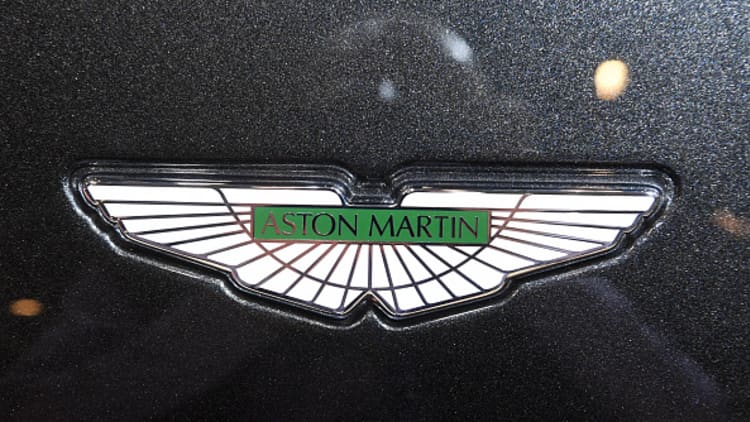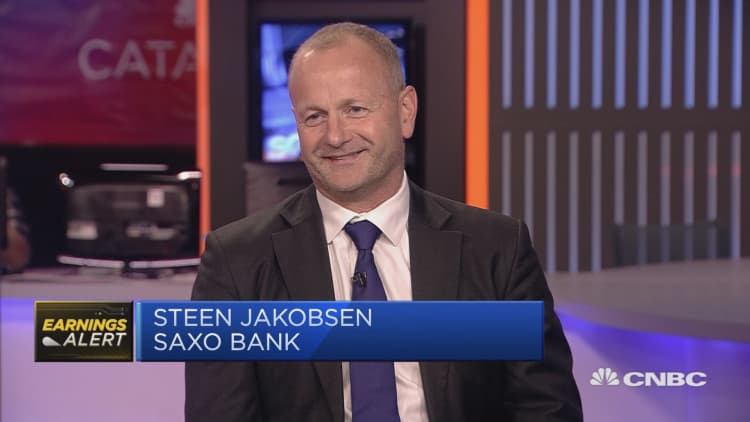It's the sort of rescue mission that, on film, might have required the likes of a James Bond to pull off, something that would seem apropos considering Aston Martin has long been the brand of choice for super-spy 007.
Not that many years ago, the British automaker seemed to be teetering on the edge of what could have become its ninth bankruptcy in a century. Now, with its balance sheet solidly in the black and a plan to double sales over the next few years on the back of new products, Aston has announced it is ready for a long-rumored IPO. It's a move CEO Andy Palmer hopes will echo what happened when archrival Ferrari went public in 2015.
"Today's announcement represents a key milestone in the history of the company, which is reporting strong financial results and increased global demand for its award-winning sports cars," Palmer said in a statement on Wednesday.
A longtime senior strategist at Nissan, Palmer, now 55, joined Aston four years ago. Many wondered why he did considering the British carmaker's sorry shape. Aston had been sold off by former parent Ford Motor in 2007 and barely seemed to survive the Great Recession under its new owners, a consortium that included Kuwaiti firms Investment Dar and Adeem Investment, and Italy's Investindustrial.

With an aging product line and little market momentum, some wondered when, rather than if, the company would go under again. It had already gone broke at least six times, and possibly eight, marketing chief Simon Sproule recalled in an interview ahead of the IPO announcement, adding that, "The records get hazy when you go back over the last 105 years."
Palmer moved fast to put the company on a different track. He quickly drew up a plan to launch seven completely new product lines in seven years, starting with the DB11 sports car that debuted two years ago. It and the DBS Superleggera, which followed it to market, are classic Astons — sleek looking and blindingly fast. Aston's investors bought into what was to become, at a projected cost of $845 million, the largest project in the Gaydon, England-based company's history.
But Palmer wasn't planning to just repeat, albeit on a larger scale, Aston's traditional formula. Within days of coming onboard in autumn 2014, he set the company's product team to work developing the DBX. A prototype of the luxury SUV debuted just months later, at the 2015 Geneva Motor Show, to strong reviews. A production version will follow in a little more than a year.
"I knew the mass of the market had clearly moved over to SUVs. I also knew 72 percent of Aston owners had an SUV, so why wouldn't we transition those brand advocates out of something like a Range Rover and into an Aston SUV?" Palmer asked during an interview.
He would soon push even further out from Aston's comfort zone by announcing a second SUV to debut in 2020, this one to wear the badge of the Lagonda brand, a subsidiary that hadn't produced a vehicle in decades. Even more radically, the utility vehicle — which will target the likes of the new Rolls-Royce Cullinan — is going to be all-electric, as will all future Lagonda models, including a sedan coming in 2021.
To leverage what is still, on the automotive scale, a relatively small bank account, Aston has been pushing to develop a series of strategic partners. Red Bull Racing, for example, is helping develop its upcoming "hypercar," the Valkyrie. Daimler, meanwhile, has taken a 5 percent stake in its erstwhile rival, a trade-out for providing Aston much-needed V-8 engines from its high-performance Mercedes-AMG unit, as well as the infotainment systems going into new models such as the DB11 and Superleggera.

When describing his strategic vision, Palmer envisions Aston as more than a carmaker, preferring to compare it to the likes of LVMH Moët Hennessy Louis Vuitton. Don't expect to see it selling caps and scarves. However, it is venturing out of its comfort zone with things like the personal sub being developed in partnership with Triton Submarines. Then there's the 66-story condo complex, the Aston Martin Residences, going up in Miami.
And, at this year's Farnborough Air Show it revealed something James Bond would likely appreciate, a three-seat personal aircraft — capable of jaunting from London to Paris in just 30 minutes — that Palmer sees as part of a rapidly changing world of transportation. It would be. A functioning prototype of the aircraft, developed in cooperation with Cranfield University and Rolls-Royce Aerospace, is due in 2020, and he seriously predicts a production model could follow before 2030.
"It's remarkable what Andy Palmer has been able to do at Aston Martin on just a shoestring budget (and) in a very short time without diluting the brand," said David Sullivan, a senior analyst with AutoPacific.
What investors may be more closely focused on, however, is what the CEO has been able to accomplish on Aston's bottom line, which is now in the black for the first time in about a decade, according to Simon Sproule, its global marketing chief. In a regulatory filing ahead of the planned IPO on the London Exchange, Aston noted that adjusted pretax earnings for the first half of the year increased 14 percent year over year, to 5 billion pounds ($137 million). Sales during the period jumped 8 percent, to 445 million pounds.
That would be just a starting point under Palmer's plans, if it can hold course. Aston sold a record 5,117 vehicles last year, its best numbers since 2008. It is looking to quickly reach 7,000 to 8,000 annually, then 14,000 by the time all seven of its new models are in production. Looking further out, Palmer sees still more opportunity for growth, though he quickly added his preference to err on the "conservative side."
Asked what makes him wake up in a sweat at night, the native Brit said he doesn't think either Brexit or a Trump import tariff will be more than a minor setback. He's more worried about a global, Lehman Brothers-level financial shock.
Whether investors will buy that optimism could be demonstrated in the coming year, the timing and pricing of the planned IPO yet to be revealed.
Clearly, Palmer hopes to replicate the success of Ferrari, which went public in 2015. It's now valued at around $24 billion, or 35 times earnings. Anything close to Ferrari-level multiples would be impressive, said Sullivan, not only considering Aston Martin's troubled history but what has been happening with its former parent, Ford, which just suffered a downgrade in its debt to one notch above junk grade.
"It makes you wonder what would have happened," said Sullivan, "had Ford been able to make things work with the Premier Automotive Group," the one-time collection of European luxury brands that included Jaguar, Land Rover and Volvo, as well as Aston Martin.
Paul Eisenstein is a freelancer for CNBC. His travel and accommodations for this article were paid by Aston Martin.
WATCH: Aston Martin will be even more of a luxury item


